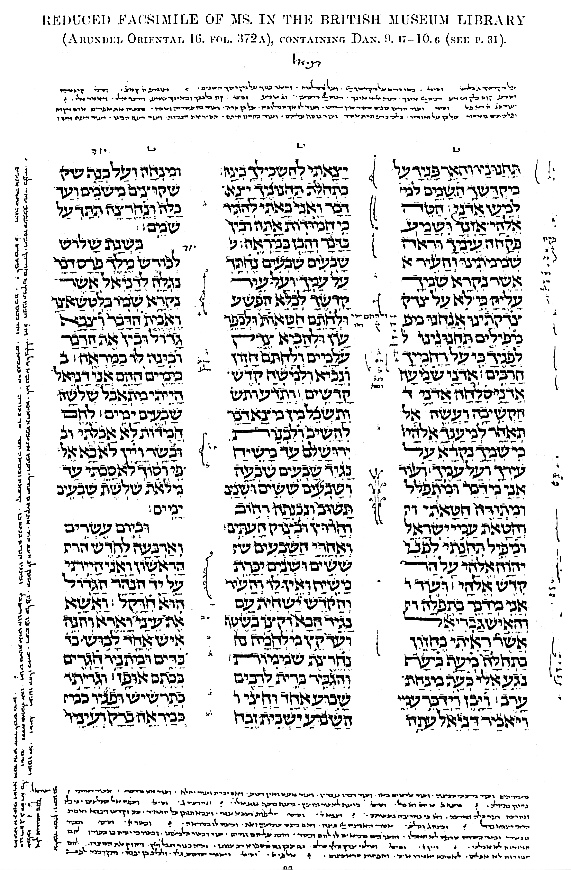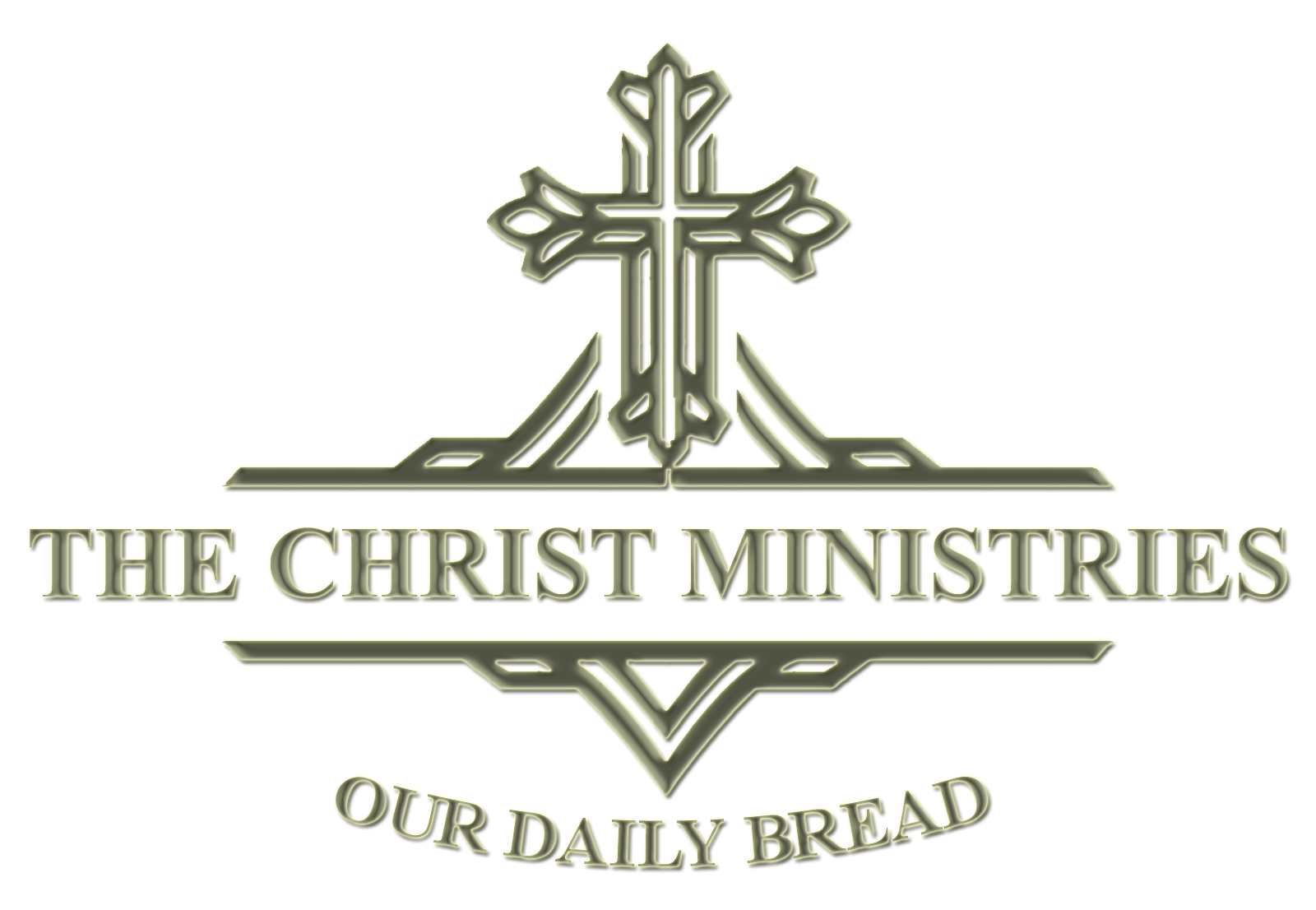This Is Appendix 30 From The Companion Bible
All the oldest and best manuscripts of the Hebrew Bible contain
on every page, beside the Text (which is arranged in two or more
columns), a varying number of lines of smaller writing, distributed
between the upper and lower margins. This smaller writing is called
the Massorah Magna or Great Massorah, while that in the side
margins and between the columns is called the Massorah Parva or
Small Massorah.
The illustration given below is a reduced facsimile of a Hebrew
Manuscript (16.25 x 12.375), written in a German hand, about the
year A.D. 1120.
The small writing in the margins in this particular Manuscript is
seen to occupy seven lines in the lower margin, and four lines in the
upper; while in the outer margins and between the three columns is
the Massorah Para.
The word Massorah is from the root masar, to devliver something
into the hand of another, so as to commit it to his trust. Hence the
name is given to the small writing referred to, because it contains
information necessary to those into whose trust the Sacred Text was
committed, so that they might transcribe it, and hand it down
correctly.
The Text itself had been fixed before the Massorites were put in
charge of it. This had been the work of the Sopherim (from saphar,
to count, or number). Their work, under Ezra and Nehemiah, was to
set the Text in order after the return from Babylon; and we read of it
in Nehemiah 8:8 1 (compare Ezra 7:6,11). The men of “the Great
Synagogue” completed the work. This work lasted about 110 years,
from Nehemiah to Simon the first, 410-300 B.C.
The Sopherim were the authorised revisers of the Sacred Text;
and, their work being completed, the Massorites were the authorised
custodians of it. Their work was to preserve it. The Massorah is
called “A Fence to the Scriptures,” because it locked all words and
letters in their places. It does not contain notes or comments as such,
but facts and phenomena. It records the number of times the several
letters occur in the various books of the Bible; the number of words,
and the middle word; the number of verses, and the middle verse;
the number of expressions and combinations of words, etc. All this,
not from a perverted ingenuity, but for the set purpose of
safeguarding the Sacred Text, and preventing the loss or
misplacement of a single letter or word.
This Massorah is not contained in the margins of any one
Manuscript. No Manuscript contains the whole, or even the same
part. It is spread over many Manuscripts, and Dr. C.D. Ginsburg has
been the first and only scholar who has set himself to collect and
collate the whole, copying it from every available Manuscript in the
libraries of many countries. He has published it in three large folio
volumes, and only a small number of copies has been printed. These
are obtainable only by the original subscribers
When the Hebrew Text was printed, only the large type in the
columns was regarded, and small type of the Massorah was left,
unheeded, in the Manuscripts from which the Text was taken.
When translators came to the printed Hebrew Text, they were
necessarily destitute of the information contained in the Massorah;
so that the Revisers as well as the Translators of the Authorised
Version carried out their work without any idea of the treasures
contained in the Massorah; and therefore, without giving a hint of it
to their readers
This is the first time an edition of the Authorised Version has been
given containing any of these treasures of the Massorah, that affect
so seriouly the understanding of the Text. A vast number of the
Massoretic notes concern only the orthography, and matters that
pertain to the Concordance. But many of those which affect the
sense, or throw any additional light on the Sacred Text, are noted in
the margin of The Companion Bible.
Some of the important lists of words which are contained in the
Massorah are also given, videlicet, those that have the
“extraordinary points” (Appendix 31); the “eighteen emendations”
of the Sopherim (see Appendix 33); the 134 passages where they
substituted Adonai for Jehovah (see Appendix 32); and the Various
Readings called Severin (see Appendix 34). These are given in
separate Appendixes; but other words of any importance are
preserved in our marginal notes.
Readers of The Companion Bible are put in possession of
information denied to former generations of translators,
commentators, critics, and general Bible students.
For futher information on the Massorah see Dr. Ginsburg’s
Introduction to the Hebrew Bible, of which only a limited edition
was printed; also a small pamphlet on The Massorah published by
King’s Printers.
NOTE
1 The Talmud explains that “the book” meant the original text;
“distinctly” means explaining it by giving the Chaldee paraphrase;
“gave the sense” means the division of words, etc. according to the
sense; and “caused them to understand the reading” means to give
the traditional pronuciation of the words (which were then without
vowel points).


